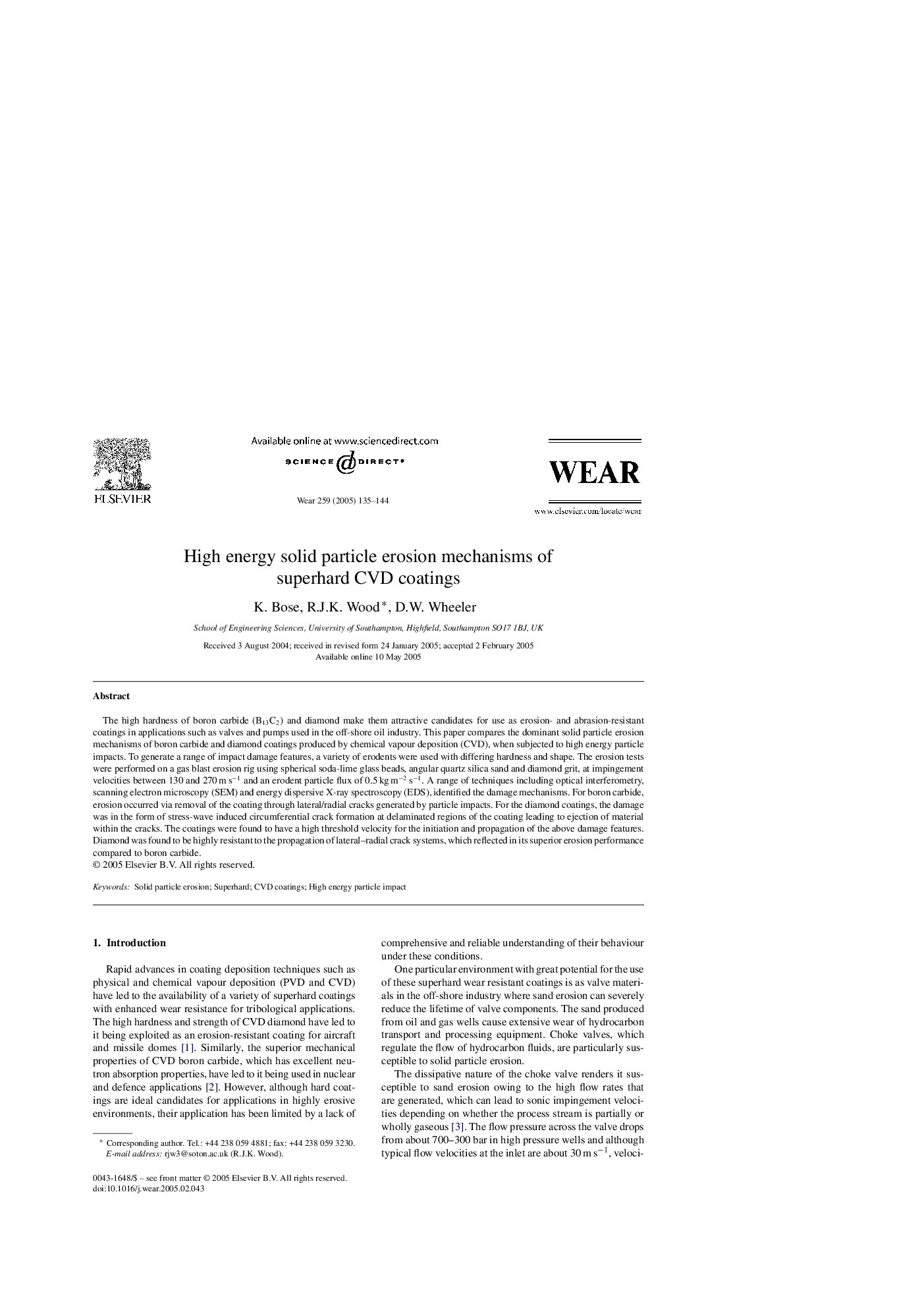| Article ID | Journal | Published Year | Pages | File Type |
|---|---|---|---|---|
| 9679403 | Wear | 2005 | 10 Pages |
Abstract
The high hardness of boron carbide (B13C2) and diamond make them attractive candidates for use as erosion- and abrasion-resistant coatings in applications such as valves and pumps used in the off-shore oil industry. This paper compares the dominant solid particle erosion mechanisms of boron carbide and diamond coatings produced by chemical vapour deposition (CVD), when subjected to high energy particle impacts. To generate a range of impact damage features, a variety of erodents were used with differing hardness and shape. The erosion tests were performed on a gas blast erosion rig using spherical soda-lime glass beads, angular quartz silica sand and diamond grit, at impingement velocities between 130 and 270 m sâ1 and an erodent particle flux of 0.5 kg mâ2 sâ1. A range of techniques including optical interferometry, scanning electron microscopy (SEM) and energy dispersive X-ray spectroscopy (EDS), identified the damage mechanisms. For boron carbide, erosion occurred via removal of the coating through lateral/radial cracks generated by particle impacts. For the diamond coatings, the damage was in the form of stress-wave induced circumferential crack formation at delaminated regions of the coating leading to ejection of material within the cracks. The coatings were found to have a high threshold velocity for the initiation and propagation of the above damage features. Diamond was found to be highly resistant to the propagation of lateral-radial crack systems, which reflected in its superior erosion performance compared to boron carbide.
Related Topics
Physical Sciences and Engineering
Chemical Engineering
Colloid and Surface Chemistry
Authors
K. Bose, R.J.K. Wood, D.W. Wheeler,
